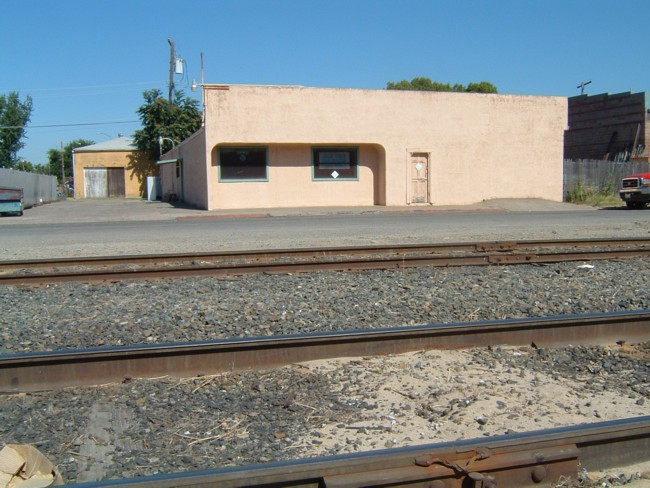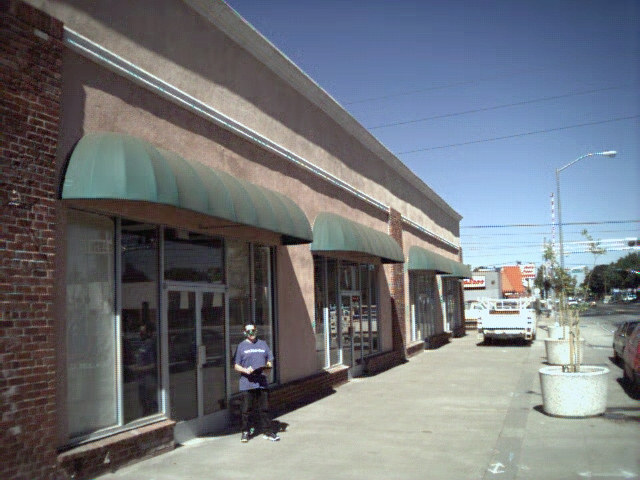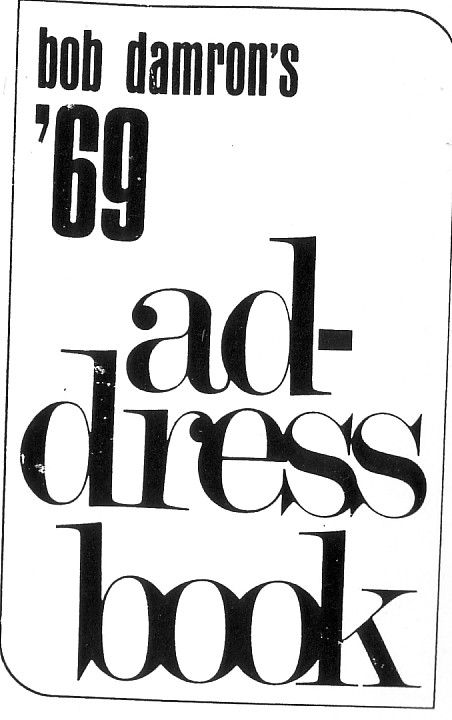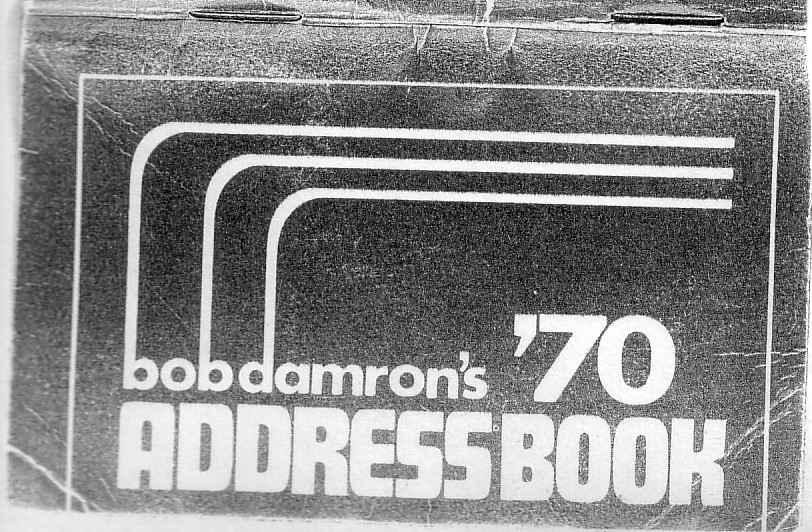|
By Mike Walker In 1964 a traveling businessman, Bob Damron, decided to print and publish a list of the many bars he visited. For an underground society, as ours was then, it was just what people needed, since bars were about the only social outlet available to homosexuals. By looking through the Sacramento listings over the years it is possible to get a glimpse into the development of our community. Like an archaeological dig we can read between the lines and speculate on the growth and direction of Sacramento’s historic hot spots. By merging bits and pieces of material from other sources we get an even more complete picture of Sacramento’s Gay development since the 1960s. Damron’s Guide grew from a booklet smaller than a cigarette pack to a much larger inch & half reference but it still fits easily in a travel bag. It was successful, was refined and remains popular even today as two annual editions, The Damron Men’s Travel Guide and The Women’s Travel Guide. Compiling and updating the annual publication was a huge undertaking and errors were common, however with the advent of the computer Damron staffers found life much easier. The annual guide became more accurate and more up to date. The Guide did more than simply provide a list of bars; it gave readers a heads up about potential threats. Popular meeting places like bookstores, bus terminals, movie theatres, beaches, parks and highway rest stops were listed. A “hot” or “fuzz” tag indicating a possibility of police presence would sometimes accompany these entries. Police and sheriff departments were not always happy with having gay bars in their jurisdictions and often had a copy of the Guide for obvious reasons. Recently AYOR, which abbreviates “at your own risk”, has been used to indicate the possible presence of police or criminals. If we were to judge the health and vitality of the Sacramento area by its listings in the Damron Guide, we would find that life in the 60’s was far better for homosexuals in Yolo County than across the river in Sacramento proper. In the 1969 edition there were five listings for Sacramento but only one (Topper) in Sacramento County. The Topper Bar was listed at 1218 “K” Street. The building was lost in the construction of Hyatt Hotel. The Hide and Seek Bar, The Log Cabin Bar and the Yolo Baths were all across the river in Bryte (Yolo County). A womens bar (signified with “g”) Jaquette’s, was listed in West Sacramento. Writing for a women’s bar reunion (The Off Key)-(pictured) in 1994 Cherie Gordon said “Sacramento’s lesbian bar history is rooted in West Sacramento since the Sacramento Police Department prevented any women’s bars being established on civilized ground”. This was the case not only for Sacramento but it is interesting to note that Palm Springs bars seemed always to be in Cathedral City. With a nod to political correctness, the Damron Guide no longer uses “g” for girls bars but now uses “W” indicating women. 1971 saw Metropolitian Community Church come out of the closet (or out of members living rooms) by renting the second floor of the Ruhstaler Building at 9th and “J” streets.  In 1975, culminating more than 10 years of work, Rev. Freda Smith, George Raya and a hearty band of activists, lobbyists and legislators, succeeded in getting human rights legislation decriminalizing homosexuality. This was a pivotal historic moment. The closet door flew open for thousands of area men and women. Life immediately became easier for Sacramento’s gays. The law made police harassment much more difficult. No longer would the conservative Sacramento Union newspaper use “HOMO” in bold font headlines*. It even became trendy to come out. Colorful Gays were often invited to non-gay parties. You may recall that not only residents but even gov offices fled to the burbs. Downtown was a ghost town. Rent was cheap. The gays were almost legal and moved into the low rent city centers. Not just Sac.- but most mid & large cities. Metropolitan Community Church rented the 2nd floor of that beautiful former bank building for a song. We brought money and restored the city center. I recall 4 of us drunk at the Topper leaving our cars & motorcycles to walk over to the new bar in a basement. Would it be a dungeon? It was a muddy walk but we were too drunk to care. The Civic Center (which we had voted down 3 times) was a construction site. It was 1977 - Rays Mercantile Saloon was born. It was the beginning of Lavender Heights and the midtown we know today. The response in the business community was quick. By 1978 the Damron Guide shows eleven bars for Sacramento with only three west of the river, in Yolo county. Bars were widely scattered throughout the suburbs (Joseph’s Montana Saloon) in Carmichael, (Bojangles) on Folsom Blvd., as well as south on Freeport Blvd (Jim Clifton’s Stardust Lounge). There were 3 bars on Broadway; Bob & Franks Underpass (pictured), The Corral, and a busy women’s bar (Angela Salivia’s Crescent Moon). Steve’s Health & Social Club (a local bathhouse) had opened on 5th street near Broadway. Under straight ownership, Rays Mercantile Saloon had just opened the year before (1977) and was becoming wildly popular. It would establish the beginnings of the 20th street club strip with K Street Bar at 20th & K (now Faces) and the Wreck Room at ……… . By the mid 80’s the Damron Guide indicated under “cruisy areas”, “Lavender Heights-21st street between “I’ & “S”. In the 1987 edition of the Guide we note that of the nine bars listed, none were west of the river in Yolo County. The move into metropolitan Sacramento was complete. The number of bars has continued to decline. The latest edition of the guide lists 5 bars and two nightclubs. Since going to print 2 bars have closed, leaving Metropolitan Sacramento with 5 drinking establishments. Compared to the eleven bars in 1978 and assuming our tripling population one might puzzle over the decline to less than half. It would seem the computer is largely responsible for at least partially replacing bars as the initial contact point. High School gays today often out themselves to family and friends with out even considering a closet life as an alternative. To a large extent the Internet has replaced bars as the initial contact point for many “connected” Gays. This permits extensive chats, and picture exchanges. Even the ground work for the all-important “long term relationship”, is often conducted online. Until the closet is not needed and equality becomes a reality, the need for Gay bars as well as the Damron Guide will remain a valuable part of our lives. NOTES: We are indebted to Leonard Tudor & Denise Franklin for background materials. 1. The OFF KEY bar was the hot spot for women in the early 1970’s. Although the lone blue light is no longer there, the building remains today facing the railroad tracks in West Sacramento.  2. The Ruhstaller Building at 902 J St. has been recently restored but in 1971 MCC rented the second floor and the bats had the third floor.  3. The Underpass Bar at 1946 Broadway as the recently organized (1976) Valley Knights Motorcycle Club prepared for a ride.  4. The site of the Underpass Bar is now a Kragen Auto parts store.  5. Cover: Although most of the hard copies of Damron Guides came from Leonard Tudor, several came to me online from Ft. Lauderdale & S.F. GLBT Libraries.   I've written the story of this evolution. It's interesting stuff to me, probably because of my sociology major. Mike  or would like to be added to my "Fifty Gay Years" e-mail distribution list, please let Melba know. Thanks! |